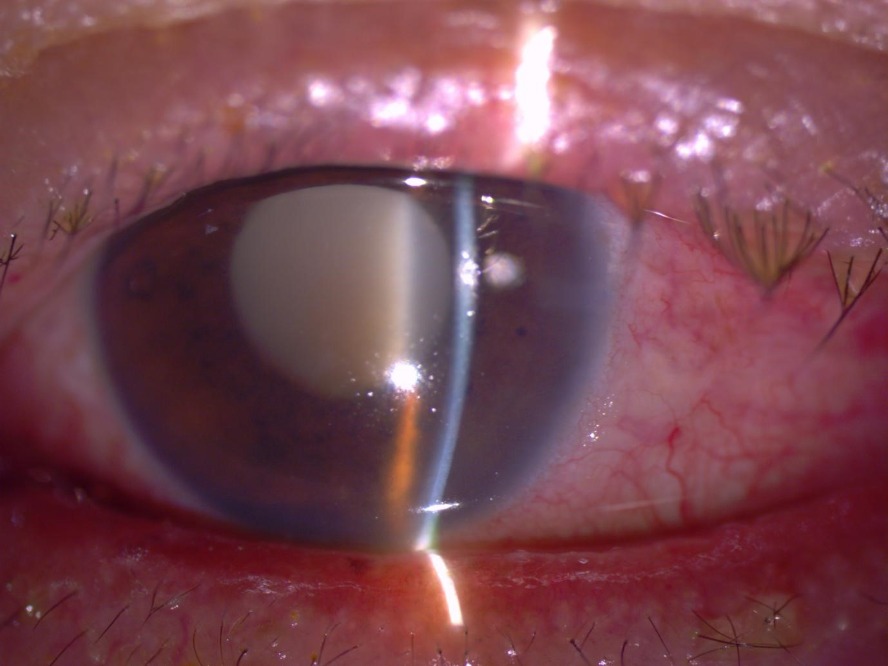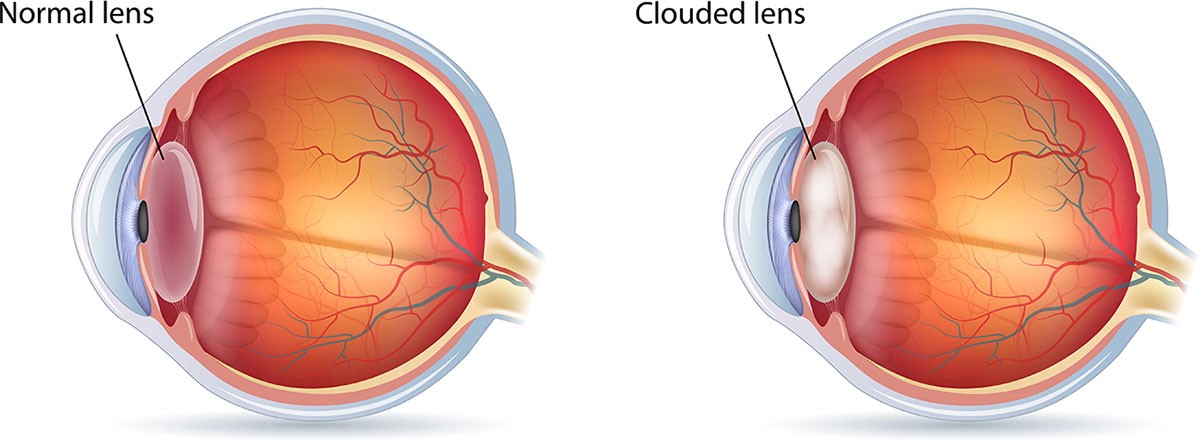
Cataract
Cataract is an opacity or clouding of the lens in your eye ball.

Cataract causing clouded lens above

White cataract or mature cataract
What are the symptoms of cataract?
- Cloudy or blurry vision
- Poor night vision
- Colours seem faded
- Glare and haloes
- Frequent prescription changes in your eyeglasses or contact lenses (“power” keeps changing)
What causes cataract?
Vast majority due to aging. Other causes are trauma, eye diseases, steroids, congenital, radiation etc.
How to prevent cataracts?
- Protecting your eyes from ultra-violet (UV) light by wearing sunglasses
- Eating a balanced diet
- Prevention of diseases like diabetes. Diabetic patients get cataract earlier than non-diabetic patients generally.
- Refraining from smoking
- Eye safety and prevention of trauma
When is surgery indicated?
Surgery will be indicated if the blurred vision starts to affect the activities of daily living.
How is cataract surgery performed?
In cataract surgery, the cloudy cataract lens is removed and then replaced with an artificial lens implant.
The main technique used to remove a cataract is phacoemulsification ( phaco ) and involved steps below
- A small incision or key hole is first created on the cornea.
- An ultrasonic device is then introduced through this opening into the eye. This device breaks the cloudy lens up into small pieces and facilitates removal from the eye.
- After the cataract lens is entirely removed, an artificial lens implant is inserted to the same position.
- Usually the wound does not require any stitching.
- Surgery usually takes less than 30 minutes.
- This is a day surgery procedure hence there is no need to stay overnight in the hospital.
- Anaesthetic eye drops and injections will be given to minimise pain. It is important to cooperate by not talking or moving your head and body during the surgery.
What are the complications?
Generally, cataract surgery is a very safe procedure with improvement in vision in vast majority of patients.
Possible complications are infection, inflammation, internal bleeding, high eye pressure, corneal problems, retinal problems including detachment, droopy eyelid etc.
Disclaimer – Above are just general information and patients are advised to see their Eye Doctors for professional treatment.
